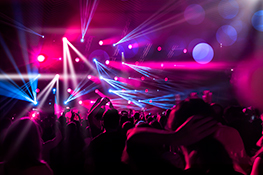Elevate Your Event: The Ultimate Guide to Stage Lighting
Understanding the Power of Light
Stage lighting is more than just illuminating a performance; it’s a powerful storytelling tool. It sets the mood, guides the audience’s eye, and enhances the emotional impact of your event. From intimate concerts to grand theatrical productions, the right lighting design can transform a simple stage into a captivating spectacle. This guide will explore the various aspects of stage lighting, helping you choose the perfect setup for your next event.
Types of Stage Lighting Fixtures
Choosing the right lighting fixture is crucial for achieving your desired effect. Let’s delve into some of the most commonly used types:
LED Par Lights:
Versatile and energy-efficient, LED Par lights offer a wide range of colors and effects, making them suitable for various applications. Their compact size and ease of use make them a popular choice for both small and large-scale events.
Moving Head Lights:
These dynamic fixtures allow for precise control over beam angle, color, and movement, creating stunning visual effects. Their ability to pan and tilt offers endless creative possibilities, making them ideal for creating dramatic and captivating scenes.
Fresnel Lights:
Known for their soft, diffused light, Fresnel lights are perfect for illuminating actors and creating a warm, inviting atmosphere. Their adjustable beam size allows for precise control over the area being lit.
Profile Lights:
These lights produce a sharp, well-defined beam, ideal for highlighting specific areas or objects on stage. Their ability to create sharp edges and precise gobo patterns makes them a valuable tool for creating intricate lighting designs.
Ellipsoidal Reflector Spotlight (ERS):
ERS lights offer precise control over beam shape and size, making them perfect for creating intricate lighting designs. They’re often used for highlighting specific actors or objects on stage.
Color Temperature and Color Mixing
Understanding color temperature (measured in Kelvin) and color mixing is essential for creating the desired ambiance. Cooler temperatures (higher Kelvin values) produce a bluer light, while warmer temperatures (lower Kelvin values) create a more yellowish or amber tone. Mixing colors allows for an almost infinite palette of possibilities.
Lighting Design Techniques
Effective stage lighting involves more than just pointing lights at the stage. Several techniques enhance the overall impact:
Motivated Lighting:
This technique uses light to mimic natural light sources, creating a realistic and believable atmosphere.
Silhouetting:
Creating silhouettes using backlighting can add depth and drama to your stage design.
Cross-fading:
Smoothly transitioning between different lighting cues creates a seamless and dynamic visual experience.
Gobos and Patterns:
Projecting patterns and shapes onto the stage adds texture and visual interest to your lighting design.
Choosing the Right Lighting for Your Event
The type of lighting you need depends on several factors, including the size of your venue, the type of event, and your budget. Consider consulting with a lighting professional to ensure you choose the right equipment and design for your specific needs.
Safety and Maintenance
Always prioritize safety when working with stage lighting. Ensure proper ventilation, use appropriate safety equipment, and follow all manufacturer guidelines. Regular maintenance is crucial for extending the lifespan of your equipment and preventing accidents.
Conclusion
Stage lighting plays a crucial role in creating memorable events. By understanding the different types of fixtures, lighting techniques, and safety precautions, you can elevate your event from ordinary to extraordinary. Contact stagelights.in today to explore our range of high-quality stage lighting solutions and let us help you illuminate your next performance.


 Auditorium Construction Services
Auditorium Construction Services 